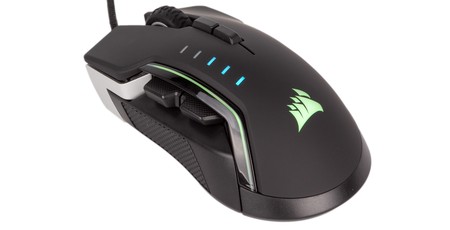
Manufacturer: Corsair
UK price (as reviewed): £69.98 (inc. VAT)
US price (as reviewed): $69.99 (exc. tax)
Much like the Ironclaw RGB Wireless that also launched today, the new Glaive RGB Pro mouse is based on an existing design, but Corsair is reaching a little further back than the start of 2019 with this one. The Glaive RGB Pro is a seven-button mouse with interchangeable side grips, RGB lighting, and a new 18,000 DPI sensor. Said to target FPS and MOBA players, it’s of course compatible with the iCUE ecosystem as well, and it has launched for £70.
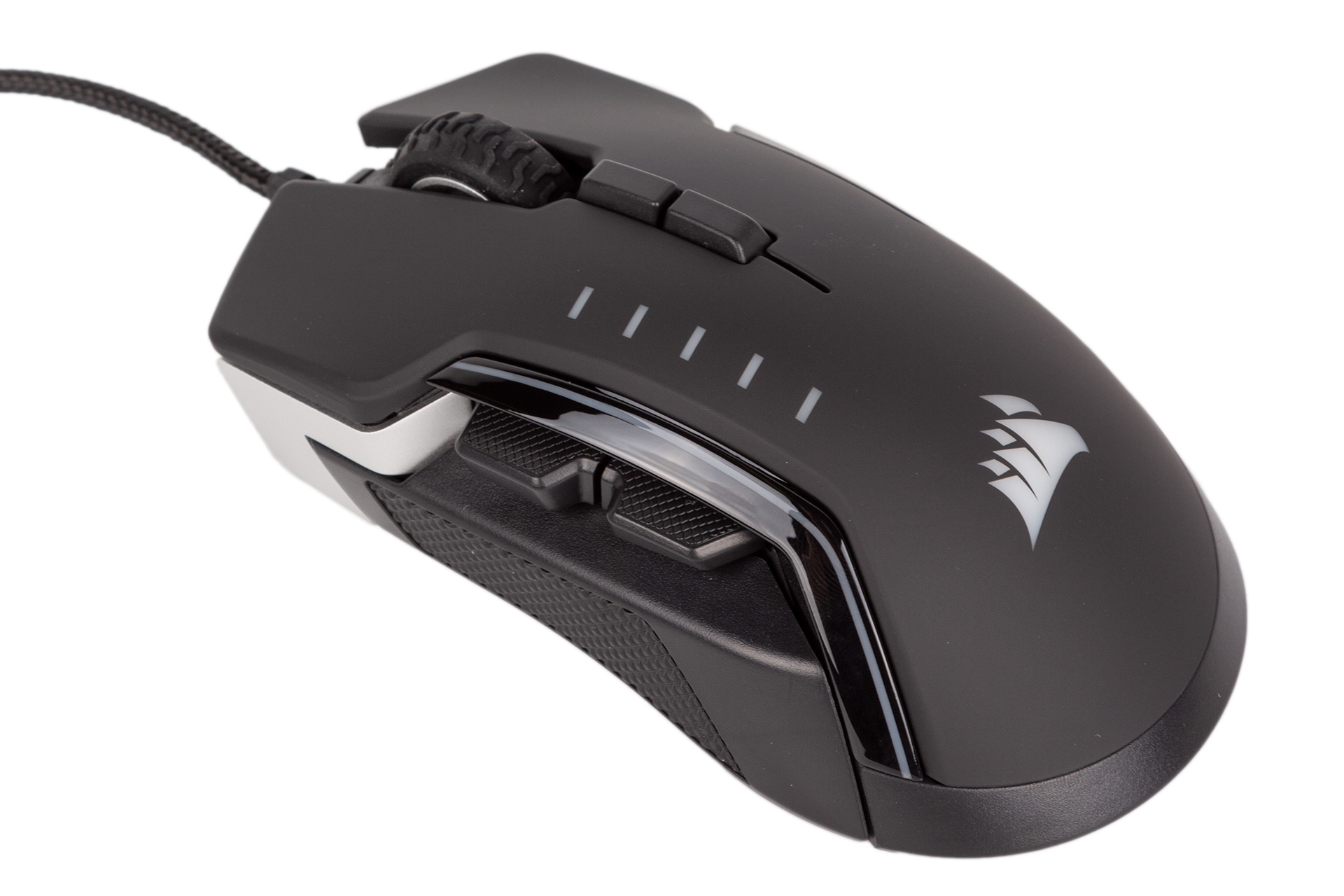
High build quality is immediately apparent. There’s an aluminium frame at the front, and the plastic elsewhere is rock solid. The 1.8m braided USB cable is captive, sadly, but it feels firmly fixed at least. A smooth matt plastic top shell is complemented by two textured rubber sides, but the texture is a bit sharp and pronounced for my taste. Nevertheless, wielding it is overall comfortable, and you get a great grip too.
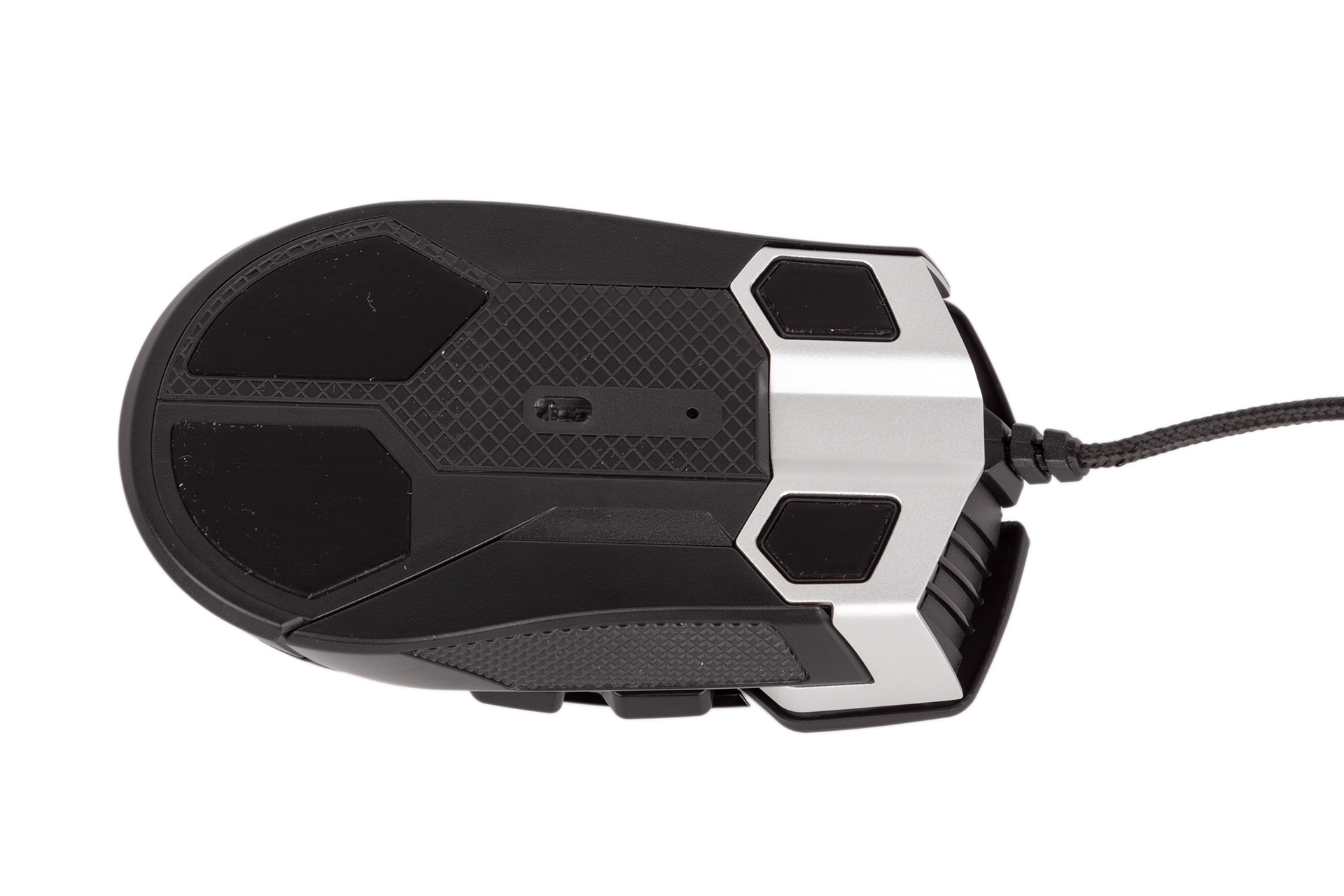
At 125mm long and 69mm wide with the default grip, the Glaive RGB Pro isn’t as full-bodied as the Ironclaw RGB Wireless, but it’s still a bulky mouse that’s best suited to a palm grip. It weighs in at 115g, and though Corsair says this is 10 percent lighter than before, it still leaves it at the heavier end of the spectrum; claw and fingertip users will likely want something more nimble, agile, and less back-heavy. In use the Glaive RGB Pro exhibits smooth movements thanks to PTFE feet, but the front ones are small compared to the large hind pads.

The default thumb grip is fairly flat and slimline, but Corsair gives you a choice of three. Each one connects via strong magnets, and there’s no looseness whatsoever. The other choices are a slightly wider one with a deeper inward curve (above right) and a significantly wider one (above left) that acts as a full thumb support. I found it quite nice to use this latter one for productivity tasks and the default one for gaming, as it’s better suited to a tighter, more action-ready grip. Of course, your mileage may vary, but each of them is well shaped and has the same textured rubber as the others.
Beneath the main clickers are Omron switches rated to 50 million clicks. They have the same ratings as those on the Ironclaw mouse (60gf actuation force, 0.45mm travel) and are just as pleasant to use.

The scroll wheel has an aluminium interior and feels great, making it better than the Ironclaw’s. The tactile feedback both when clicking and scrolling is pleasant and nicely balanced, and the textured rubber exterior ensures grip is maintained.
The Glaive RGB Pro has a classic seven-button design with two DPI toggles and two thumb buttons. The thumb buttons are a highlight in how easy they are to distinguish and actuate, and the springy rebound works well.
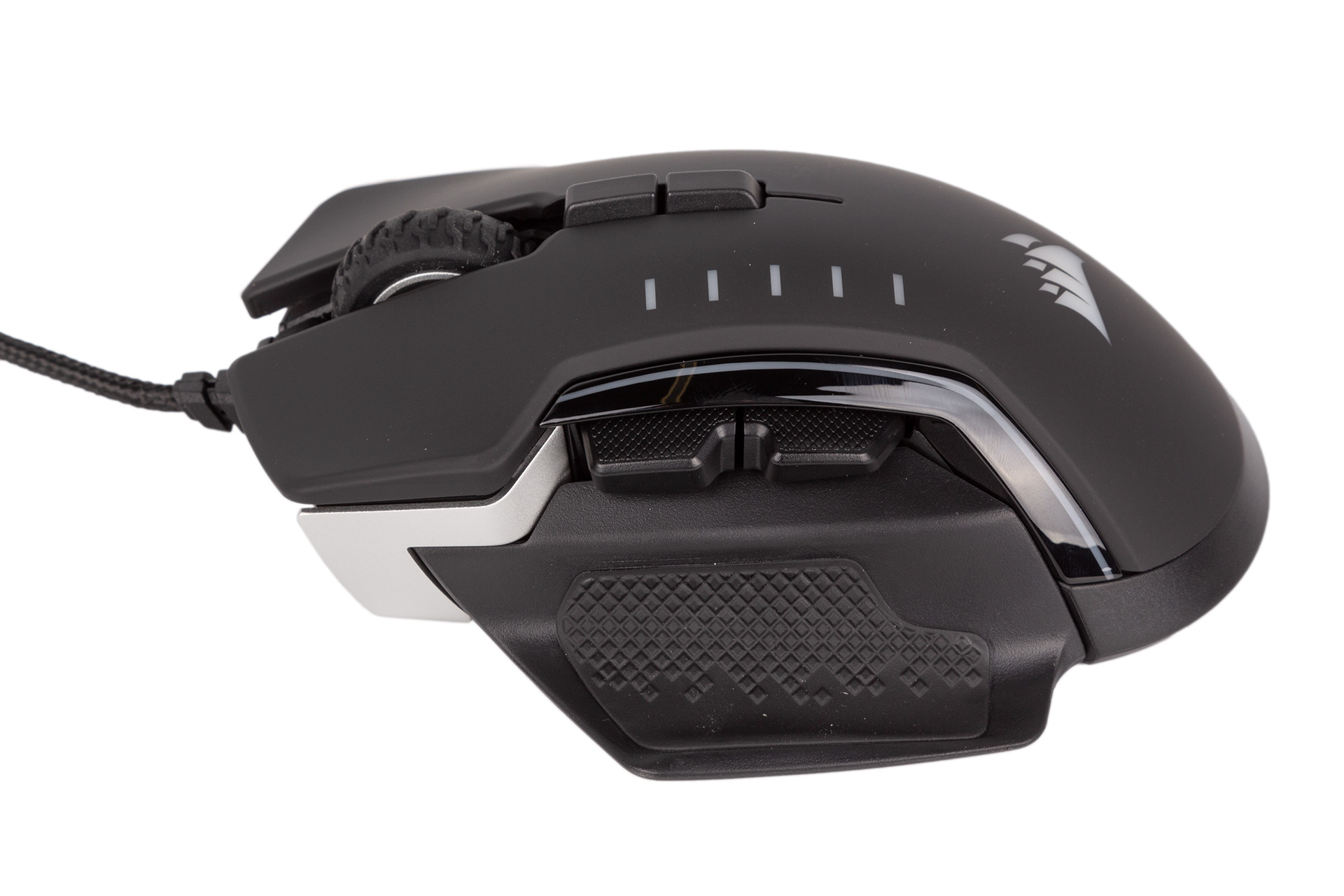
You also get three-zone RGB lighting: the front “headlights”, the two side strips, and the logo are treated independently and can thus be configured differently within the software.
You can program in up to five DPI levels per profile, and the Glaive RGB Pro uses indicator LEDs on its chassis to tell you which you’re currently on. Occasionally you’ll have to move your finger to glance what’s going on, though, and the side strip lighting would have been better used for this function.
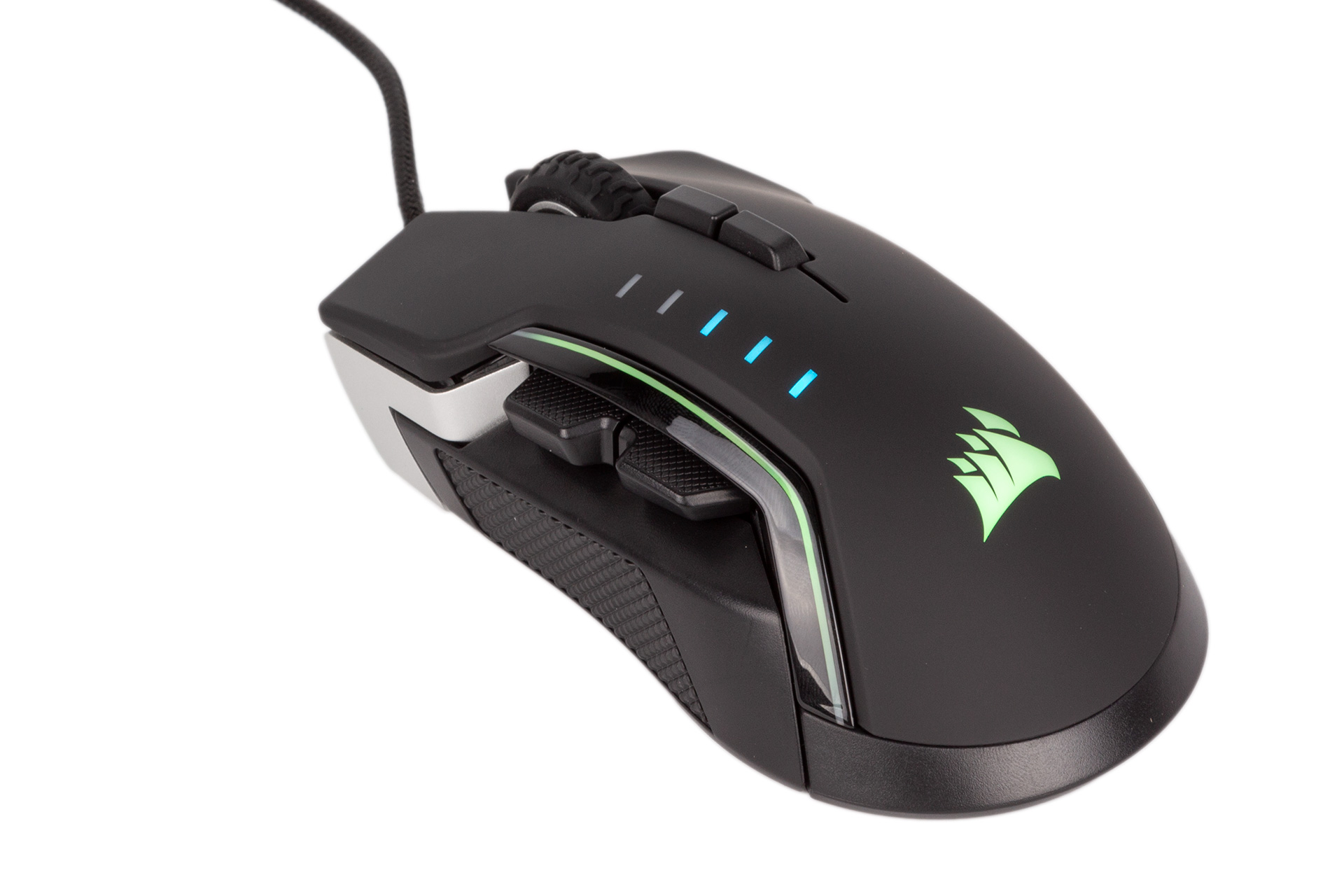
Corsair deploys the same custom PixArt PMW3391 sensor as it does in the wireless Ironclaw mouse. It is based on the PWM3389 sensor, a high-end optical design. In this instance it has a peak resolution of 18,000 DPI, which you can set to values as low as 100 DPI and in 1 DPI steps. The performance of it is really excellent, with jitter at reasonable levels non-existent, acceleration not observable, and no angle snapping or other unwanted anomalies. Lift-off distance is equivalent to roughly two optical disks.
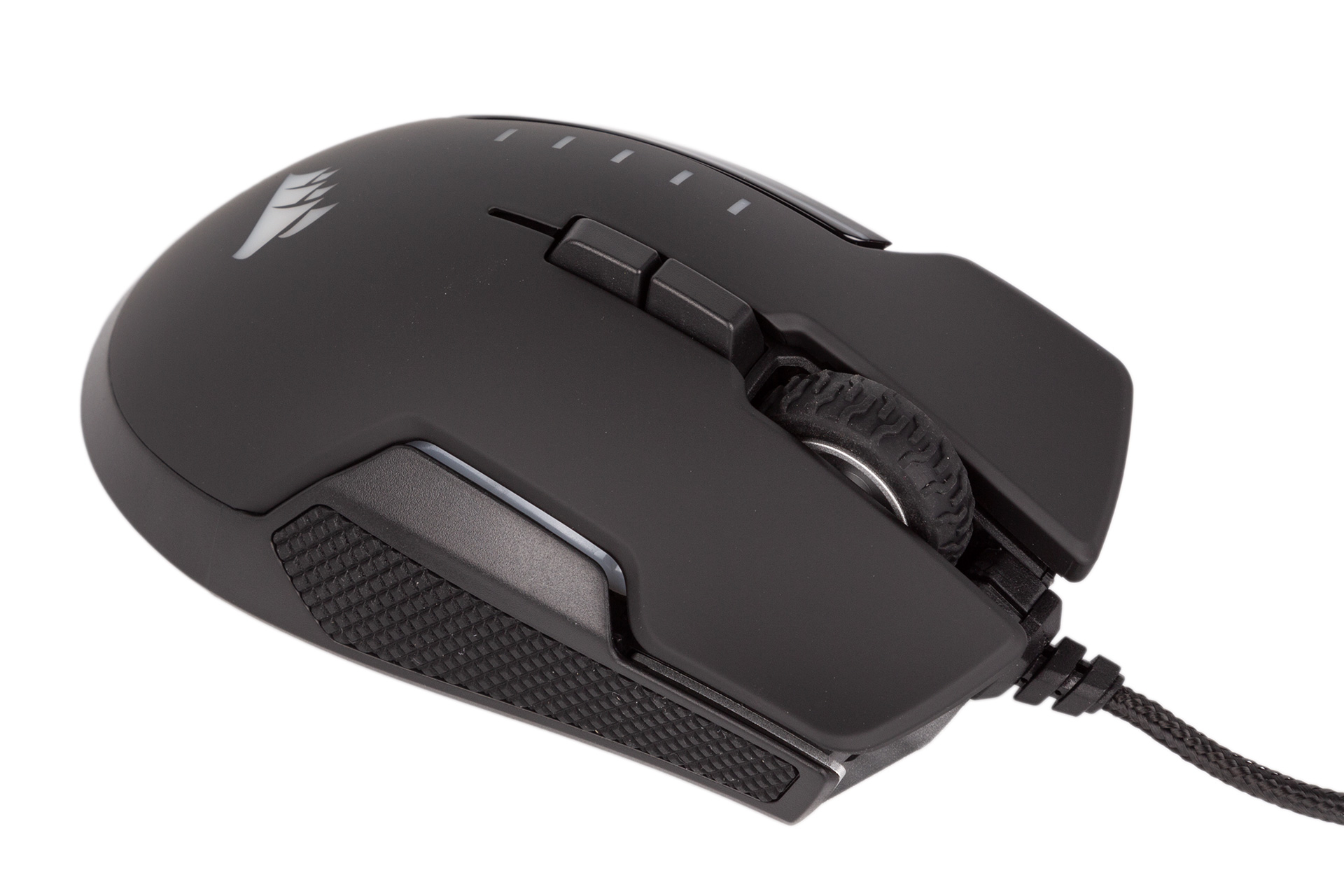
Sadly, the Glaive RGB Pro only supports one onboard profile. This is better than none, of course, but if you want to take custom settings with you or not have software running in the background, you’ll need your customisations to fit onto one profile, which may be tough with "only" seven buttons. Either way, you’ll be using the iCUE software to make changes, so let’s take a look at the iCUE software before wrapping things up.

MSI MPG Velox 100R Chassis Review
October 14 2021 | 15:04

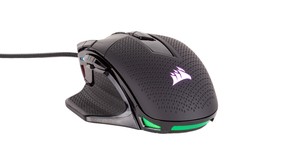
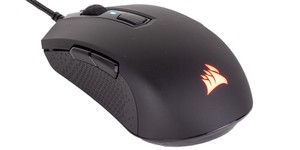
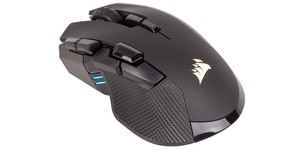




Want to comment? Please log in.